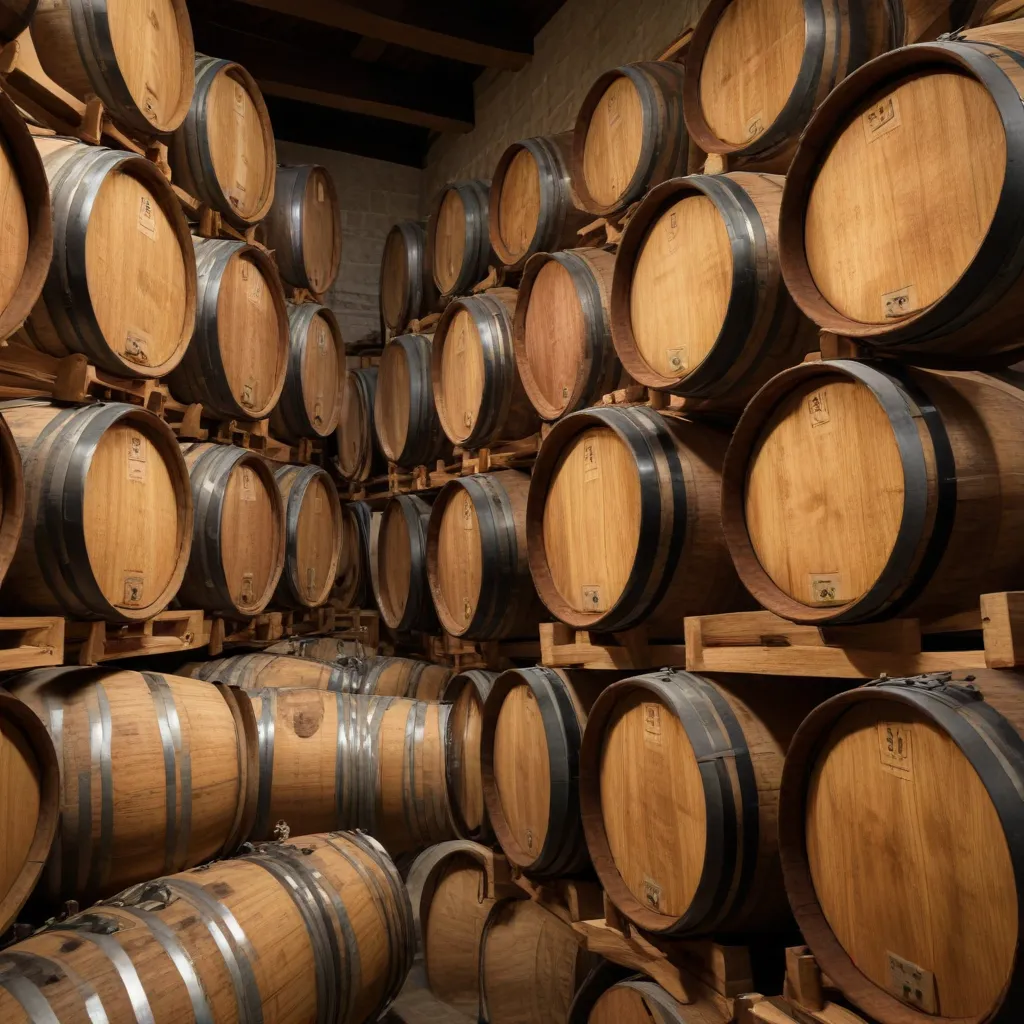
Oak barrels have long been the silent architects of winemaking, shaping the flavor, aroma, and structure of wines with their unique influence. From imparting subtle notes of vanilla and spice to lending a velvety mouthfeel, the role of oak in the winemaking process is both complex and captivating. In this deep dive, we’ll unravel the secrets behind oak aging, exploring how these humble vessels transform grapes into exceptional elixirs.
The Science of Oak Aging
The Oak Tree’s Influence
At the heart of the oak aging process lies the oak tree itself. Whether it’s the renowned French oak from the Allier forest or the robust American oak, the natural properties of this versatile wood play a pivotal role in the maturation of wines and spirits. The tannins and aromatic compounds found within the oak’s structure react with the liquid, influencing its color, flavor, and overall character.
The Cooperage Process
Behind every oak barrel lies the meticulous craft of cooperage, the art of barrel-making. Skilled coopers carefully select and season the oak, shaping the staves with precision to ensure a watertight seal. The toasting level, a process of charring the inside of the barrel, can further enhance the oak’s contribution, imparting notes of caramel, spice, or even a subtle smokiness.
Oak Composition and Reactions
Oak’s influence on wine is not merely a passive one; it’s a dynamic interaction driven by the wood’s chemical composition. The tannins in oak not only add structure and mouthfeel but also contribute to the wine’s color and age-ability. As the wine interacts with the barrel, these tannins undergo a gradual transformation, softening over time and integrating seamlessly with the wine’s other components.
The Impact on Wine Character
Flavor Profile Changes
As wines age in oak barrels, their flavor profiles undergo a remarkable evolution. In their youthful exuberance, wines often display vibrant, fruit-forward notes. But with the passage of time, these primary flavors give way to the emergence of secondary and tertiary aromas, such as vanilla, spice, and even hints of tobacco or leather. This seamless transition from fresh fruit to a more complex, nuanced character is the hallmark of well-aged, oak-influenced wines.
Structural Transformations
The impact of oak aging extends beyond mere flavor; it also shapes the wine’s overall structure and mouthfeel. The tannins, which can impart a gripping astringency in young wines, gradually soften and integrate, resulting in a velvety, harmonious texture. This metamorphosis not only enhances the wine’s approachability but also allows the other structural elements, such as acidity and alcohol, to shine in perfect harmony.
Maturation Effects
The exchange between the wine and the oak barrel is a delicate dance, facilitated by the controlled introduction of oxygen. This gentle oxygenation process unlocks new aromas, smooths out any rough edges, and ultimately contributes to the wine’s longevity. The specific barrel capacity, whether it’s the compact 1 LITRE GATOR BARREL or the expansive 10 LITRE OAK AGING BARREL, can also influence the speed and depth of this maturation process.
Barrel Variations and Winemaking
Oak Species and Origins
The choice of oak is not a one-size-fits-all decision for winemakers. French oak and American oak each offer distinct characteristics, with the former imparting a more subtle, elegant influence and the latter contributing a more robust, assertive profile. The region where the oak is grown, such as the Allier or Tronçais forests in France, can also play a role in shaping the final wine.
Barrel Toast Levels
The toasting level, or the degree of charring applied to the inside of the oak barrel, is another crucial factor in winemaking. Light toasting lends delicate notes of vanilla and baking spices, while heavy toasting can introduce more pronounced flavors of caramel and even a subtle smokiness.
Barrel Aging Techniques
Winemakers employ a range of techniques to harness the power of oak barrels. Barrel fermentation, where the wine undergoes its initial fermentation in oak, can contribute to a richer mouthfeel and a more seamless integration of oak flavors. Barrel maturation, on the other hand, allows the wine to gradually absorb the nuances of the oak over an extended period, often years.
Sensory Exploration of Oak-Aged Wines
Aroma and Bouquet
The interaction between wine and oak barrels results in a captivating interplay of aromas. As the wine ages, it develops a tapestry of secondary and tertiary scents, from the alluring vanilla and baking spices to the more earthy, tobacco-like notes. This evolving bouquet is a testament to the oak’s ability to unlock new layers of complexity.
Mouthfeel and Texture
Oak aging not only shapes the wine’s flavor profile but also its physical presence on the palate. The tannins, which can be firm and unyielding in young wines, gradually soften and integrate, creating a velvety, almost silky mouthfeel. This transformation enhances the wine’s overall balance and allows the other structural elements, such as acidity and alcohol, to harmonize seamlessly.
Tasting Notes and Descriptors
Each sip of an oak-aged wine is a journey of discovery, with a myriad of sensations unfolding on the palate. Depending on the specific oak variety, toasting level, and aging regime, one might encounter notes of dark berries, dried fruits, toasted bread, or even a hint of cigar box. These descriptors paint a vivid picture of the oak’s influence and the winemaker’s craft.
The world of oak aging is a tapestry of tradition and innovation, where the timeless art of cooperage meets the ever-evolving science of winemaking. As we savor each glass of oak-aged wine, we are witnessing the culmination of a harmonious partnership between nature and human ingenuity. From the Gator Barrel range at Urbanbarrelcompany.com to the iconic wines of the Rioja region, the secrets of oak aging continue to captivate and inspire wine enthusiasts the world over. Join us as we delve deeper into the enchanting world of oak-aged wines, where each sip unlocks a new chapter in the ever-evolving story of viticulture.
